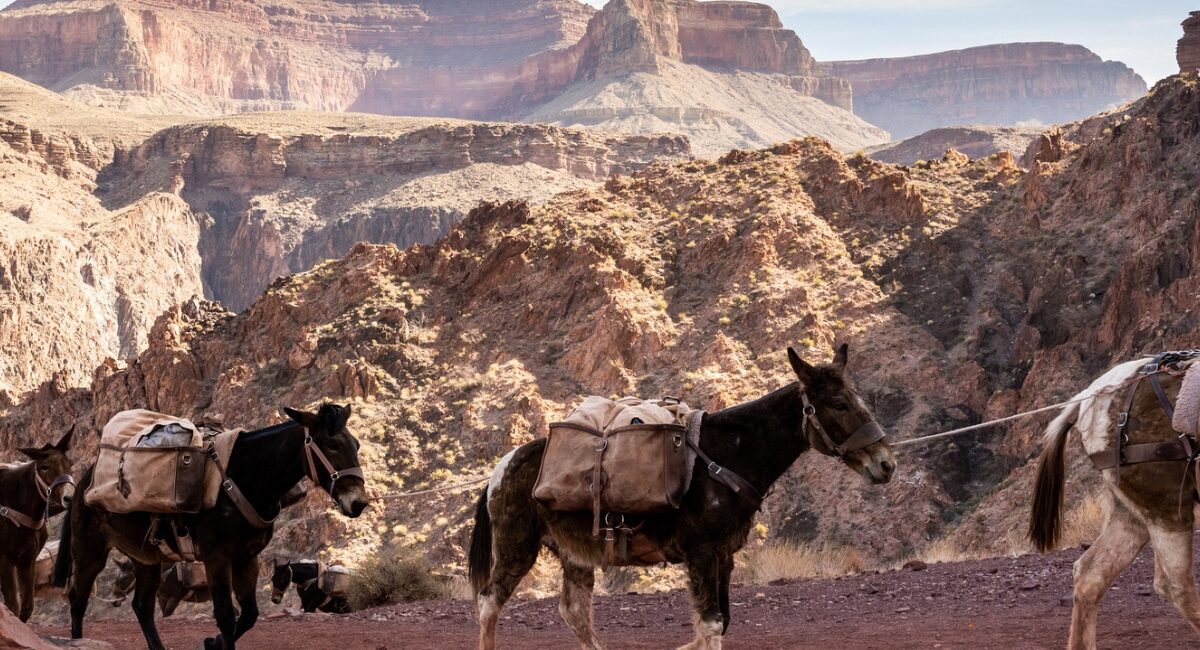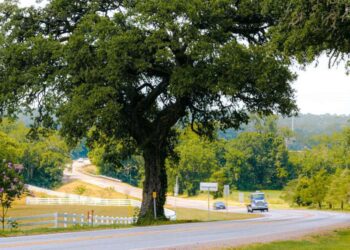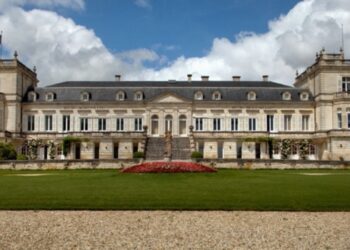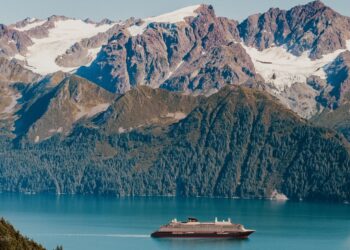Some people ride horses bareback. Instead, I’m riding a mule with my eyes closed.
On the rim of the Grand Canyon, perilously clopping along the craggy verge, I don’t have to look to know that the rocky shear plummets down for a gobsmacking mile to the Colorado River basin below. I open one eye, and see a whirl of pink, green, and golden hues — just a blur of bliss. As I shut my eyes again, my mule steps yet closer to the edge, as if he’s trying to look into the abyss for me. I shudder, and try looking side-eye at the mind-boggling view. It both tantalizes and terrifies me. Ten miles across the canyon, on the other side, I see a tower, tiny as a cactus, pointing to the sky. Below, lionhearted tourists, including some on mules, clamber down the canyon’s serpentine trails, like diligent ants in a line. The canyon’s millennium-old strata, a mish-mash of texture and color, the faraway North Rim, and a corona of clouds like Baroque curlicues in the sky, combine to produce palpable poetry.

At once, dread takes over again. I emit that hissy sound, which I normally associate with my nervous grandmother. With that, Ed, my cowboy guide, turns to me. He has had enough of my cowardice. He looks me right in my one open eye, and says: “Trust your mule. Enjoy the ride. He has no interest in going over that edge.”
And, suddenly, those words — advice from master to student — resonate. My fear dissipates. I am one with the mule — even though he’s scuttering on the rim with nothing but air between us and the stone-scattered bottom. With a newly acquired zen, I yield to my equine caretaker. A unit now, we follow Ed for a few miles on a trail, which showcases the brilliance of this two-billion-year-old, inexpressible, seventh natural wonder of the world. Flanked by aromatic pine trees to my right, I notice little details — butterflies flitting, wildflowers popping from apertures in the rock, and hawks gliding in figure eights above my head. At intervals, Ed suggests we stop, turn our mules toward the canyon and teeter steps closer to the periphery. Pointing out geological formations, from towering buttes to flat mesas to needle-sharp pinnacles, he also shows me hoodoos that look like hand-crafted clay belfries, and ruffled rock faces that glimmer in the light. He tells stories, too — tales of the Grand Canyon that bring its history to life.
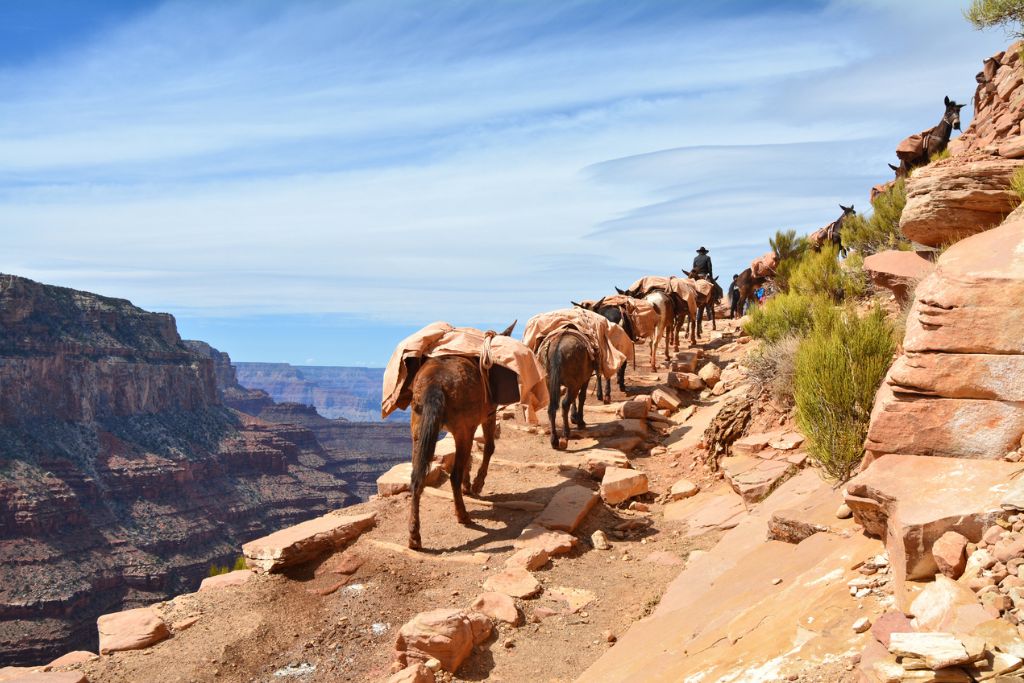
I’ve wanted to ride a mule at the Grand Canyon since I was in second grade. That’s when I first read the classic, Brighty, a book about a miner and his burro, by Marguerite Henry, still sold in the national parks’ bookstores today. Ironically, the book isn’t as popular as the top-selling time at the Grand Canyon: “Over the Edge: Death in the Grand Canyon,” anxiety-making stories that might be partially responsible for my on-saddle panic attack. But, just thumbing through a collection of horrific, macabre deaths isn’t what caused my seizures of fear on the rim. It was, as Ed, said, not trusting my mule. The truth is that mules, the hybrid result of a horse and donkey, have been transporting canyon visitors since the 1800’s safely and with surefooted diligence around the canyon. According to sources at the canyon, more than 600,000 intrepid travelers have ridden mules, without ill effect, since 1887. Today, riding a mule down the canyon, a ten-mile-plus journey, is one of the iconic ways to experience the glories of this geological phenomenon. Many trudge down on this all-day journey, sleeping at the bottom of the canyon at rustically luxurious Phantom Ranch, then waking to ascend in the morning. For most, it reigns as the experience of a lifetime.
But fear not: you don’t need a mule adventure to delve into the glory of the Grand Canyon, a deep gorge, protected by UNESCO, carved by the Colorado River in Northern Arizona. You can just stand and stare at it — ideally not too close to the edge. The Grand Canyon’s ancient layers reveal some of the oldest exposed rock on earth. A sight to behold, it can be accessed from its South Rim, a 25-mile length of desert paradise, or experienced on its more untrammeled North Rim, a more inspirited adventure. Visitors can explore the canyon with verve on glamping style, guided journeys via river rafts, on hiking trails, or by bus along its rims.
But, I’m an advocate of the mule method as a way to connect with the landscape’s gravitas and history. Giddy, I finish my mule ride exhilarated — and still alive. When I return to El Tovar Lodge, Grand Canyon National Park’s most regal and historic hotel, universally considered the “crown jewel” of lodges at national parks, the concierge waves me down. “I told you, you’d come back in one piece,” he says laughing. I nod. “It’s all about trusting the mule.”
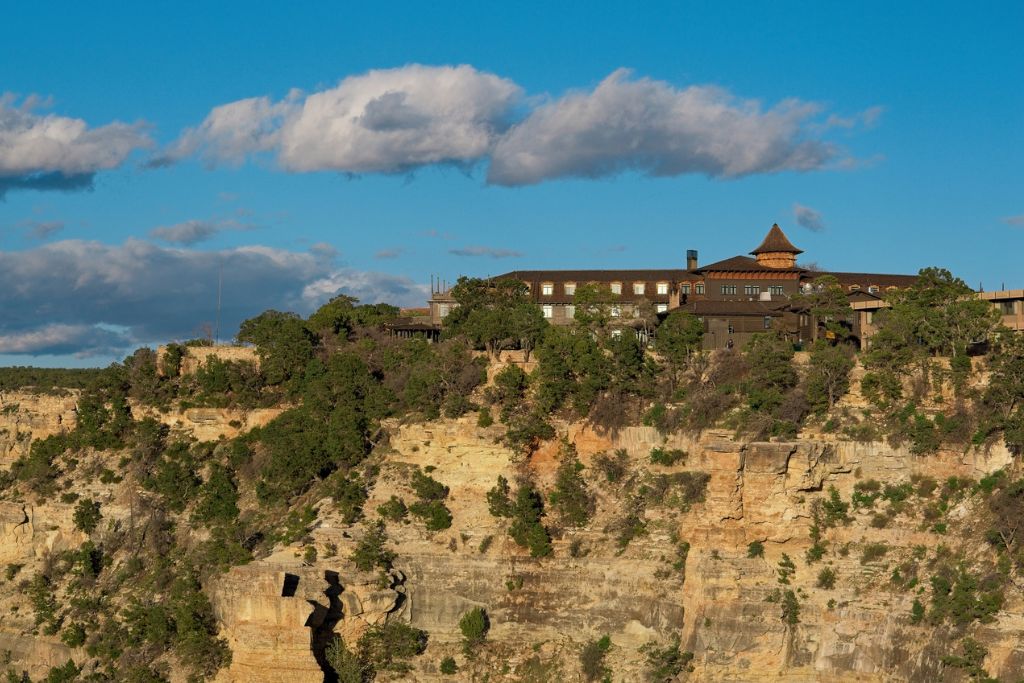
More about El Tovar:
Wowing with period architecture, a stately demeanor, old school elegance, and a Canyon rim location that drops jaws, this stunning hotel opened in 1905. Designed by notable Chicago architect Charles Whittlesey, chief architect for the Atchison Topeka and Santa Fe Railway to be a marriage between a Swiss Chalet and a Norwegian villa, it reflected the turn-of-the-century glittarati’s deification of European culture. Built for $250,000, mind bogglingly expensive for the time, it was touted to be the most “elegant hotel west of the Mississippi River.” Famous guests include Oprah Winfrey and Paul McCartney. Book the Fred Harvey Suite ($899+ per night), named for the renowned developer of El Tovar. A two-room haven on the second floor, overlooking the canyon, features an immense private balcony, which faces spellbinding, rim-to-rim vistas never to be forgotten.
Featured image courtesy of Kelly Vandellen, iStock

